- Administrator
- Albums and Singles
 Konstellaatio is yet another release in Mika Vainio's current prolific spate of recordings, and amazingly even here, alone in his solo √ò guise, there seems to be no reduction in quality. Half of this album channels the minimalist techno of Pan Sonic, while the other half hints at moody, sparse ambience that has characterized his other recent works. Like much of his discography, Konstellaatio manages to have an organic warmth amongst its machine generated noises that slowly reveals more of its character.
Konstellaatio is yet another release in Mika Vainio's current prolific spate of recordings, and amazingly even here, alone in his solo √ò guise, there seems to be no reduction in quality. Half of this album channels the minimalist techno of Pan Sonic, while the other half hints at moody, sparse ambience that has characterized his other recent works. Like much of his discography, Konstellaatio manages to have an organic warmth amongst its machine generated noises that slowly reveals more of its character.
The first three songs of this album are the ones that make for the strongest throwback to the Pan Sonic sound."Otava" is carried along on a deep bassline and a synthetic kick drum that approximates a slow tempo house track.This becomes even more apparent with melodic synth pads fleshing it out and even pushing it dangerously close to new age territory without going too far.In a similar vein is "Syvyydessä Kimallus," which matches its sharp inorganic thud and brittle rhythmic pulse bar for bar with gentle passages of spacious ambience.
The first few moments of "Kesäyon Haltijat" are painfully shrill, but it is short lived, replaced by an analog drum thump and white noise puffs to approximate a snare.At the same time, a haunting bell like melody sneaks in and heralds the more placid moments to come on the album.Perhaps the most drastic manifestation of this sound is the ending piece "Takaisin," which is a skeletal song based upon a chintzy drum machine rhythm.Its basic melody gives a lighter, looser feel compared to the bulk of Vainio's work, while his penchant for deep sub bass tones stays in place.
The remainder of this album focuses less on the deep beats and more into pensive synths and electronics.On "Elämän Puu," rhythms are essentially tossed out the window for the sake of pure mood and melody.The bits of random noises that open the piece slowly meld into a melancholy structure, and even with the extreme high and low passages the mood stays somber and hushed."Syvänteessä Pukinjalkaisen" also stays away from rhythms and instead uses mostly soft synth stabs with dramatic low end accents, feeling like a light 1980s synth piece stripped back to its barest essentials.Far different, but still similarly avoiding rhythms is "Talvipäivä, Vanha Motelli," which is mostly a wet, vibrating spring type sound paired with textural static until it closes on digital chimes and sadness.
Even with all of these recent releases, Vainio has upheld his quality control, and also retained distinct identities for each.The ambient moments of Konstellaatio are strong, but I cannot help but favor the beat oriented tracks, with the simple rhythms of techno belying the complexity and nuance of the tones and textures he employs.Like much of his work, it is deceptively simple in its construction, but hides a world of electronic brilliance just below the surface.
samples:
 
Read More
- Administrator
- Albums and Singles
 Kontakt der Jünglinge, the cross-generational collaborative project between Thomas Köner and Asmus Tietchens had a burst of activity in the late 1990s and early 2000s, but has since remained rather quiet. This album marks not only their return, but also their first true studio recording. The previous four albums were all live performances, and even the non-live disc Frühruin was actually two solo pieces composed in a similar style. In that regard, Makrophonie 1 accomplishes exactly what it should, capturing the duo’s stark, yet somehow inviting minimal electronics with a greater polish and tightened compositional sensibility that the studio setting brings.
Kontakt der Jünglinge, the cross-generational collaborative project between Thomas Köner and Asmus Tietchens had a burst of activity in the late 1990s and early 2000s, but has since remained rather quiet. This album marks not only their return, but also their first true studio recording. The previous four albums were all live performances, and even the non-live disc Frühruin was actually two solo pieces composed in a similar style. In that regard, Makrophonie 1 accomplishes exactly what it should, capturing the duo’s stark, yet somehow inviting minimal electronics with a greater polish and tightened compositional sensibility that the studio setting brings.
On the surface, the album seems as if it could be a complete 180 from what preceded it.Gone is the stark black mathematical text on white backgrounds, which more closely resembled an academic paper than an album cover.Instead it is replaced with a whole lot of black with dark gray text, and even the disc itself is black on both the playable and label surfaces.Thankfully though, the music contained within is very much consistent with the duo’s previous work.
Presented in the same fashion as the recordings from last decade, Makrophonie 1 is a single, nearly 40 minute piece of interlocking passages that bear the mark of both artists’ signature sound, but presented with the sound of a true collaboration.The extremely low frequency opening punctuated with short, noisier bursts somehow manages to be a calm introduction, even with its dissonant moments.Plinking, unrecognizable sounds and what sounds like the slightest hint of a melodic passage slip through in through these moments.
This dichotomy between the understated melodic and tasteful dissonance is a recurring theme throughout this piece, which is not all that surprising given that both Tietchens’ and Köner’s solo works are often based on the same sort of concept.Ghostly sweeps of dark, haunting tones mix with crackling, phased static early on, with both trading off to create a dramatic, swirling build of intense music that sounds richer and more fully realized than what was captured on their live collaborations.
At times there almost develops a sense of rhythm, admittedly loose and non-traditional, which harkens back to both artists’ earlier works.While it does not clearly resemble Tietchens’ early synth pop like instrumental miniatures or the deconstructed dance music of Köner’s other project Porter Ricks, shrill beeps and sub bass throbs do lock into a sort of rhythmic collage of complex noise and clinical tone.The same sub-aquatic low end processing of Porter Ricks also appears throughout, as does Tietchens’ love of intricate, almost tactile noise.
Kontakt der Jünglinge might not make the most accessible music, but for all its abstraction, Makrophonie 1 is far less abrasive and off-putting than artists working with similar sounds.Perhaps it is due to both Köner and Tietchens having worked in more traditional styles before, because there is a sense of musicality here that is buried and hidden, but undeniable in its presence.It is for this reason that this album stands out as something pleasurable to listen to, rather than a clever experiment or endurance test.
samples:
 
Read More
- Administrator
- Albums and Singles
 This fourth full-length by the revered (yet somewhat chameleonic) David Lettelier takes his techno in a simpler and more spacious direction than its 2011 predecessor (OR) with varying degrees of success.  While I have seen this effort compared to early Autechre or referred to as "IDM" or "retro" several times, it does not feel much like a deliberate nostalgia trip at all to me.  Such reference points are not exactly off-base, but Solens Arc often seems much more like Lettelier has merely discovered that a throbbing, non-intrusive rhythmic backdrop is the perfect framework for presenting his more experimental leanings.
This fourth full-length by the revered (yet somewhat chameleonic) David Lettelier takes his techno in a simpler and more spacious direction than its 2011 predecessor (OR) with varying degrees of success.  While I have seen this effort compared to early Autechre or referred to as "IDM" or "retro" several times, it does not feel much like a deliberate nostalgia trip at all to me.  Such reference points are not exactly off-base, but Solens Arc often seems much more like Lettelier has merely discovered that a throbbing, non-intrusive rhythmic backdrop is the perfect framework for presenting his more experimental leanings.
Tellingly, Lettelier has both a career in architecture and some time in noise-rock bands in his resume: two threads that manifest themselves quite clearly on Solens Arc.  David seems to have made a conscious effort to build these songs from only the most simple and necessary components and to purge them of all possible clutter.  In that regard, this album is a complete success, as his palette of thumping bass drum, synthesizer, and gnarled, heavily processed guitar throws everything into sharp relief and makes every single sound count.  That approach works beautifully when a piece is built upon a strong motif, like the wobbly, ravaged-sounding swells of "Transitional Ballistics" or the sizzling, panning ambient thrum of "Apogee."  It is less successful, however, when the composition falls a bit short in some capacity.
Usually those shortcomings come in the form of dated-sounding synth textures, which was a bit unexpected for me, as Solens Arc also has quite a few four-on-the-floor house beats, which is something I usually loathe.  David does an admirable job of keeping them to a low simmer though, rather than using them to bludgeon me with forced excitement.  David's synthesizer arpeggio hooks are a legitimate problem though, as they definitely take otherwise great pieces like "L'Envol" and "Amber Decay" down a peg with their artificial, stuck-in-the-late-'90s burbling.  That is very exasperating, as the alternately snarling and distantly hollow guitar swells of "Decay" are otherwise prime grist for a killer song.  Also, the synths feel weirdly out of character with the rest of the album's aesthetic, as Letellier is otherwise extremely adept at avoiding anything that seems heavy-handed or too on-the-nose.
I suspect people with deeper nostalgia for the '90s dance underground or less of a subjective hostility towards synthesizer arpeggios will get a lot more out of this album than I did, but I was definitely very impressed by David's clarity and skill nonetheless.  There is a lot of legitimately great material here (I also liked the lurching, hissing opener "Serendipity March") and it is generally executed in a distinctive way.  Unfortunately, the sprinkling of dated techno tropes and textures waters down what should have been a uniformly excellent album.  As it stands, "Transitional Ballistics" is the only unqualified success on Arc to my ears, but its assemblage of inspired near-misses is still significantly more appealing and expertly realized than the bulk of Kangding Ray's peers.  At its best, Arc more closely resembles experimental music with a strong pulse than a mere well-crafted trip back to the more discriminating dancefloors of decades past–I just wish it was at its best more often.
Samples:
 
Read More
- Administrator
- Albums and Singles
 Despite constantly encountering his many guises in The Wire and elsewhere, I never actually got around to investigating the extremely prolific Nick Edwards until now.  As usual, however, my timing is almost supernaturally perfect, as his first effort for Planet Mu is being rather unanimously hailed as his creative zenith.  I cannot vouch for that myself, but Unfidelity is certainly a very cool album, sounding like an especially hallucinatory strand of dub techno mingled with a deep appreciation for kitsch and absurdist fun.
Despite constantly encountering his many guises in The Wire and elsewhere, I never actually got around to investigating the extremely prolific Nick Edwards until now.  As usual, however, my timing is almost supernaturally perfect, as his first effort for Planet Mu is being rather unanimously hailed as his creative zenith.  I cannot vouch for that myself, but Unfidelity is certainly a very cool album, sounding like an especially hallucinatory strand of dub techno mingled with a deep appreciation for kitsch and absurdist fun.
The most appealing single aspect of Unfidelity is Edward's almost childlike glee in coaxing wonky sounds out of his gear.  That singular aesthetic is not the only appealing aspect of Unfidelity, but it is definitely its most memorable trait and easily eclipses the actual songs.  Maybe "songs" should be in quotation marks, actually, as these 11 pieces are more like beat-based soundscapes than anything resembling structured songs with hooks.  Then again, pieces like the opening "Trace Elements" do not need hooks because they are hooks: Edward's clanking and complex Aphex Twin-style beat would be infectious no matter matter what he put on top of it.  In this case, he embellishes it with a winkingly ominous synth progession and a host of whooshing and blooping sounds that recall the BBC Radiophonic Workshop.  Such sounds are not usually my favorite thing, but they are perfectly at home in Ekoplekz's kooky world of cartoonish menace.
In general, the pieces with the strongest beats are the better ones and it is quite reasonable to describe Unfidelity as 11 variations on a single, simple theme.  However, that theme is almost invariably a compellingly executed one.  While it is probably best experienced in smaller doses than an entire album, Edwards certainly tries like hell to keep his formula vibrant and unpredictable with a production tour de force of various buzzes and echoing sounds that pan and clatter all over the place.  Aside from "Elements," some other rhythmic stand-outs are the relentlessly stomping and skittering "Pressure Level" and the "frightened heartbeat pulse" of "Nerva Beacon," though the album is certainly littered with a number of other appealingly squelching and clattering motifs.
The best pieces on Unfidelity, however, are the few where Nick manages to improbably wring genuine pathos out of his amiable retrofuturist bag of tricks.  One such highlight is "Tuning Out," which gradually builds its sizzling, melancholy swells and constantly morphing beat into a snowballing, complexly multilayered thing of beauty.  The title piece is similarly dazzling, augmenting its warm, gently flanging shimmer with an appealingly languorous bass line and an endearing array of echoing bleeps and bonks.
Contrary to the normal state of affairs, those two great pieces do not feel like an exasperating glimpse into what could have been an even better effort.  Instead, they feel like well-placed crests in a distinctive and intelligently sequenced album.  My sole real critique of Unfidelity is that a little of Ekoplekz goes a long way due to the limited palette employed, but Nick has definitely succeeded in crafting a very unusual and fun album that boasts a handful of great singles.  Actually. I suppose "singles" should maybe be in quotes too, since there are not a hell of a lot of radio stations that would play something this willfully eccentric and niche, but they are damn good songs regardless.
 
Read More
- Administrator
- Albums and Singles
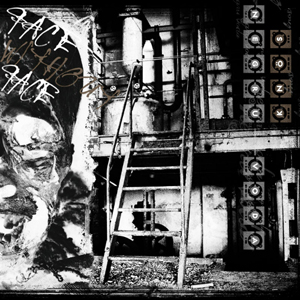 Face Without Face, to me, is the musical equipment of a genre film. It pairs a respected master (Negru Voda) with a relatively new artist (Knös) in a split release of harsh European electronics that offers no surprises nor earth shattering developments, but accomplishes what it intends to. Muffled, bleak and rhythmic, this split is a great throwback to the Tesco/Cold Meat Industry scene from the late 1990s.
Face Without Face, to me, is the musical equipment of a genre film. It pairs a respected master (Negru Voda) with a relatively new artist (Knös) in a split release of harsh European electronics that offers no surprises nor earth shattering developments, but accomplishes what it intends to. Muffled, bleak and rhythmic, this split is a great throwback to the Tesco/Cold Meat Industry scene from the late 1990s.
Negru Voda, the solo guise of Peter Nyström, is no stranger to this type of art.His project Megaptera is one of the innovators of the sub-sub genre of death industrial, and his work here does not short change that legacy at all.The pieces here exhibit a surprisingly high level of restraint:"Still Death" hovers ominously with a low bass churn and crunchy dissonance that builds, but never becomes too intense."Different Layers" pulls things back even further, leaving a low end rumble and occasionally filtered swells of noise.Throughout it feels like harshness is ready to break out at any time, but never does, building tension beautifully.
An unrelenting drum machine lies at the heart of "Der Scharfrichter," and with the clanging reverb over random voice stabs, it bears a bit of resemblance to some of Esplendor Geometrico’s best works."Distorted Warfare" is more of a crossover piece here, with Knös' Frederik Djurfeldt contributing vocals to Nyström's music.It retains a rhythm, albeit an extremely haphazard and buried one, and leans a bit into the world of power electronics due to the vocals, but kept muted and quiet enough to keep it out of genre clichés.
Knös' half of this disc is not quite as oppressive as Nyström’s, emphasizing the rhythmic passages more."Fasansfull" utilizes muted noise loops that pop up, but sticks more to an ominous hum and galloping drum machine throughout.Menacing synth pads comprise the core of "Mörda Ofta" hinting at a more subtle composition, but soon destroyed by a violent stabbing kick drum that hits extremely hard.The arrangement is really quite basic and simple, but the careful processing makes it very effective.
A helicopter-like panning on "Du Har Fan Inget Ansikte" makes for a dark atmosphere with the low frequency synths matching up with the mood of "Mörda Ofta" but when paired with wet, white noise tinged synth passages it drifts a bit more into the world of noise."Slå Ihjäl Dig" does not suggest noise as much as fully revel in it:the sloppy, metallic reverb enshrouding what I assume to be vocals gives it a clearly old school power electronics feel.The disc ends on a subtler note, however."Tänk om Jag Vore En Elefant" is at first focused on creeping, quiet noise textures, but the heartbeat like kickdrum and respirator like electronic swell leaves the album on a clinical, disturbing note.
For a style that can be as overwrought as this is at times, both the old master and the young neophyte focus on the strengths of the genre, mostly the dark, bass heavy moods and fractured rhythms. Just as impressive is how they manage to ignore the traps of just slathering reverb onto every instrument and mumbling into a microphone here and there.It might not redefine a genre or style, but it is an exceptional work that embraces the strengths of the sound without falling into the tired traps many succumb to.
samples:
 
Read More
- Administrator
- Albums and Singles
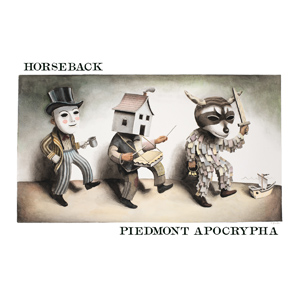 2013 was an uncharacteristically quiet year for Horseback. While leader Jenks Miller released a solo record and the band put out a three disc compilation of limited and unreleased material, that was about it. The result of that hiatus is Piedmont Apocrypha, an album that hits many of the touchstones Horseback has worked with before, but as an evolved, more nuanced album that is polished and more complex than what preceded it.
2013 was an uncharacteristically quiet year for Horseback. While leader Jenks Miller released a solo record and the band put out a three disc compilation of limited and unreleased material, that was about it. The result of that hiatus is Piedmont Apocrypha, an album that hits many of the touchstones Horseback has worked with before, but as an evolved, more nuanced album that is polished and more complex than what preceded it.
The most striking aspect of these five songs are how much they avoid the realm of heavy metal that Miller and crew has consistently dabbled in throughout the band's career.This is pretty clear from the cover artwork:instead of the usual monochromatic, stylized paintings that hint at the tropes of black metal, it instead is a folksy painting on a stark white background.The music follows this shift in aesthetics, mostly stripped down when compared to the southern demonic rock of Half Blood.
One thing that remains consistent though is Miller's expertise in conjuring the backwoods occult, a sense of evil lurking in the dense woods and a sinister undercurrent to stereotypical southern hospitality."Passing Through" is an excellent example of this:based upon a traditional sounding cyclic blues motif with a country twang, the snarling vocals and piercing feedback signify an evil barely being contained.The same feel comes through on "Milk and Honey," with the initial field recordings conveying bleak isolation as the gentle organ and guitar chime away, more mournful than malignant.
The title piece is no different in its ambience, with shimmering organ and twanging guitar slowly filling up space in the mix, becoming more oppressive as it goes on.It is a slow build with the instruments slowly layering in until reaching a full band sound in the latter half, the different layers erratically intersecting before coming together in a locked in folksy, country influenced piece of music.
The sprawling "Chanting Out the Low Shadow" closes the album with a full on band and also results in a succinct primer on the Horseback sound, as elements from the entire catalog show up.The lurching guitar progression eventually leads into Miller's demonic growl that is otherwise absent from Piedmont Apocrypha.Calming down, the vocals shift to plaintive nasal delivery that is reminiscent of an Appalachian David Tibet singing hymns of similar esoteric imagery.Meanwhile the piece continues this classically minimalistic structure, building layers that stretch out and expand dramatically over the cyclic base rhythm.It eventually reaches full on rock, with soaring keyboards and rapid-fire drums in a truly epic climax, before folding back into a coda that sounds like the band playing into a broken radio.
To me, the recent Horseback material has reminded me in some ways of REM's Fables of the Reconstruction, and I mean that as the highest compliment considering my love for that album.While sonically distinct from one another, both have that same southern folk influence tinged with a hint of darkness.REM's may have insinuated a sense of evil while Horseback lays it out bluntly, but I still get the same sense from both, but wrapped in the context of memorable, catchy music.Compared to Miller's recent work the country influence is even more pronounced, and while I must admit to missing the straight ahead rock throb of Half Blood, Piedmont Apocrypha is a more complex work that reveals more of its mythos in due time.
samples:
 
Read More
- Administrator
- Albums and Singles
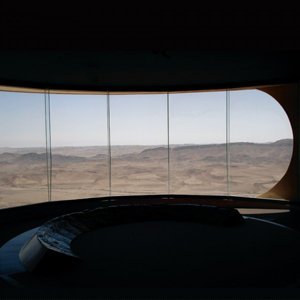 In his 29 year career, Francisco López’s work could never be described as accessible. His treatment and processes of both organic and synthetic sound sources have ranged from pensive to painful, and everything in between those extremes. This, however, may be his most daunting work to date: a data DVD of uncompressed wave files and a total of seven hours. The 17 "quiet" pieces are challenging, yet captivate when experienced in the right context.
In his 29 year career, Francisco López’s work could never be described as accessible. His treatment and processes of both organic and synthetic sound sources have ranged from pensive to painful, and everything in between those extremes. This, however, may be his most daunting work to date: a data DVD of uncompressed wave files and a total of seven hours. The 17 "quiet" pieces are challenging, yet captivate when experienced in the right context.
As with many prolific artists such as López, I have largely dabbled in and out of his expansive discography a couple of times a year.Before, I had considered the 10 disc Nowhere box from 2008 to be quite a difficult collection, but the fact that those were both shorter pieces, as well as ones of significantly varying dynamics made it a bit easier to digest such a wealth of material.
Presque Tout compiles his most minimalist works imaginable, and thus requires an extreme dedication and attention to detail in order to fully appreciate, because many times it is extremely difficult to even discern that something is playing.The sleeve warning that it should only be listened to via headphones or a set of high quality speakers is not to be taken lightly, as smaller speakers simply cannot reproduce this material adequately.
Sequenced in chronological order, the earlier pieces are perhaps the most sparse and also the least engaging.Opener "El Dia Anterior a la Emergencia de los Adultos de Magicicada" (I am still somewhat surprised to see a titled López piece) is mostly 15 minutes of low frequency humming.Even via headphones at a relatively loud volume level, it is almost imperceptible that anything is happening."Untitled #78" is similarly barren, with only the subtlest of ambience, like a field recording of an empty room."Untitled #87" presents a similar sense of stillness and silence, barely crossing the threshold of nothingness.
Pieces such as "Untitled #86" and "Untitled #118" feature some audible elements, and seem to be in league with López's nature based works.The former has an organic life to it, more emphasis on high end and what sounds like possibly birds chirping far away.The latter resembles a swarm of insects from miles away, with the muted dynamic serving to amplify the ambiguity.The more recent works here are also the ones that not only seem the most inorganic, but also the most commanding ones, relatively speaking."Untitled #129" and "Untitled #216" both focus mostly on ultra low frequencies that are more easily felt than heard.The former also has the unexpected addition of a rhythmic rattling that is perhaps the most conventional and boisterous sound to be heard anywhere on this compilation.The latter sticks mostly to its low end, and listening with in-ear headphones results in an uncomfortable feeling of pressure."Untitled #309," mostly made of a creeping industrial din has an oppressive, slowly moving menace about it that almost feels like a non-quiet specific López work, and quite a strong one at that.
The closing piece, "Untitled #313," is the album’s centerpiece, and clocking in at three hours exactly also comprises nearly half of this collection.Featuring many of the elements of what preceded it, the first third is mostly low volume bass swells that slowly creep along, cresting after the first hour as a passage of chirpy synthetic sounds that make for a rather strong contrast.Beyond that, things become more distorted and textural, with bits of digital noises cutting in and out.It does quite a bit of evolution throughout, but I cannot help but feel that its extreme duration may partially be to take advantage of the medium more than to convey a specific sound
I quite enjoyed this collection, but it is admittedly a hard release to recommend to anyone who is not already a López fan.My go-to artist for this type of work is the rather unprolific Bernhard Günter, and while the dynamics are the same, the actual content is not.Presque Tout does not make for a good jumping in point to López's massive discography by any means.For someone who not only is familiar with his works, but also the more minimalist styles he works in, there is a lot of greatness here to be heard.Finding the time to fully devote to experiencing, however, may be the biggest stumbling block, because this requires full attention to truly appreciate, as cliché as that may sound.
samples:
 
Read More
- Administrator
- Albums and Singles
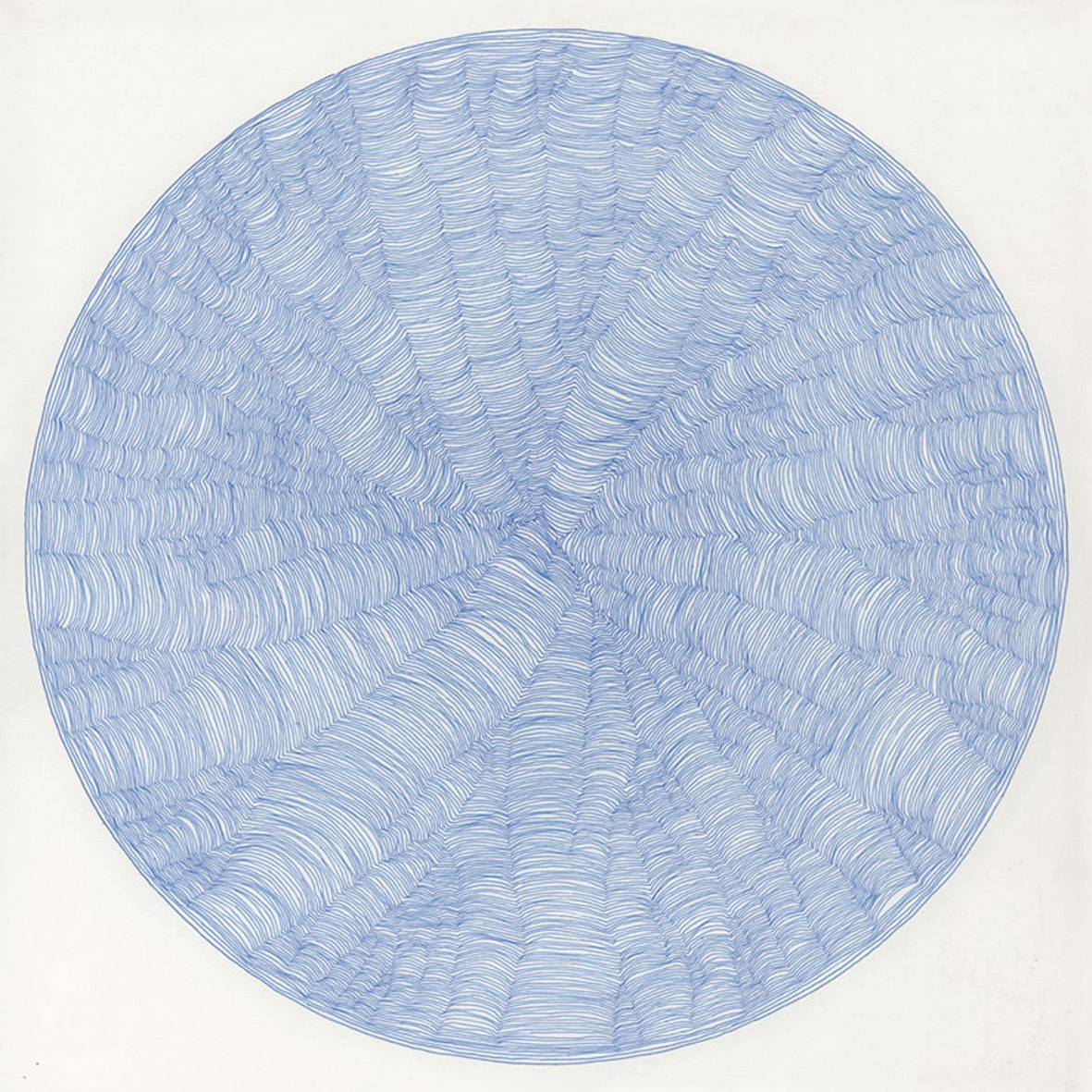
There are a few reasons why I am so late to the party on Daryl Groetsch's work, but the primary one is that I first heard about him in the early 2000s, when he was appearing on albums with titles like All I Want for Xmas is Bowel Disrupting Noise and Underwater Corpse.  Consequently, his transformation into one the premier purveyors of kosmische-inspired long-form analog synthesizer voyages went entirely unnoticed by me.  Another reason, unfortunately, is that Pulse Emitter has a dangerous tendency to veer into cloyingly saccharine New Age territory, as he sometimes does here.
There is a curious paradox at the heart of Pulse Emitter's recent work, as Groetsch seems to increasingly draw his inspiration from the natural world, yet works exclusively with some of the least natural-sounding instrumentation around.  Crater Lake is a prime example of that phenomenon, as it partially originated when Daryl went camping in Crater Lake National Park while working on a planned album inspired by the moons of Jupiter.  The trip had a profound effect on Groetsch, as his original idea became quickly subsumed by a fascination with the similarities between Crater Lake and those distant moons.
Daryl manages to convey that inspiration fairly successfully on the opening "Europa."  Although it takes its name from Jupiter's ice-covered moon that may famously be hiding a secret ocean, its twinkling and radiant shimmer definitely seems more inspired by the sun coming up over an isolated Oregon lake than anything mysterious, distant, and cold.  Which, unfortunately, brings me to my primary issue with Crater Lake: there is not a hell of a lot of depth, mystery, or emotional complexity apparent in these pieces at all.  Rather, they often feel unambiguously beatific, embracing a gloopy, candy-colored pastoralism that I cannot relate to very much at all.  That is probably my problem, as "Europa" is an objectively a very well-crafted composition, but there is a reason why the adage about the devil having all the good music exists.  Wide-eyed happiness is a tough sell, particularly among us experimental music enthusiasts.
Groetsch does arguably toss me a bone with the brooding, distorted "Io" (inspired by some jagged rock outcroppings at the lake), but he does not exactly play to his strengths (patterns and melodies).  Unfortunately, the following "Enceladus" returns to Pulse Emitter's most gently burbling and bucolic tendencies with a goddamn vengeance that comes close to unlistenability for me.  The closing "Titan" thankfully rights the ship, however, offering up some nicely understated, warm, and meditative swells augmented by a languorously cascading melody, chime-like fluorishes, and a surprisingly active and unpredictable pattern of bass bloops.  It is by far Crater Lake's best piece, so at least Daryl started the album promisingly and ended strong. Shame about the middle though.
The truly exasperating thing about this lukewarm review is that I have heard some Pulse Emitter songs that I have genuinely loved.  There have been quite a few that I have hated as well, but Groetsch is capable of truly wonderful work.  In fact, some of Crater Lake might even be wonderful work, but Daryl's brighter, cheerier side clashes so violently with my personal sensibilities that it is impossible for me to fully appreciate any of it.  Yet another perplexing aspect of Crater Lake is that it is a fairly high profile release for Pulse Emitter, but it is eclipsed by some of his limited edition cassettes.  In any case, I am pleased that this album will likely get Groetsch more exposure than he is used to, though I will probably spend a lot more time sifting through his back catalog than I will revisiting this particular effort (I do want to go to Crater Lake now though–I guess that might count as a triumph of sorts).
 
Read More
- Administrator
- Albums and Singles
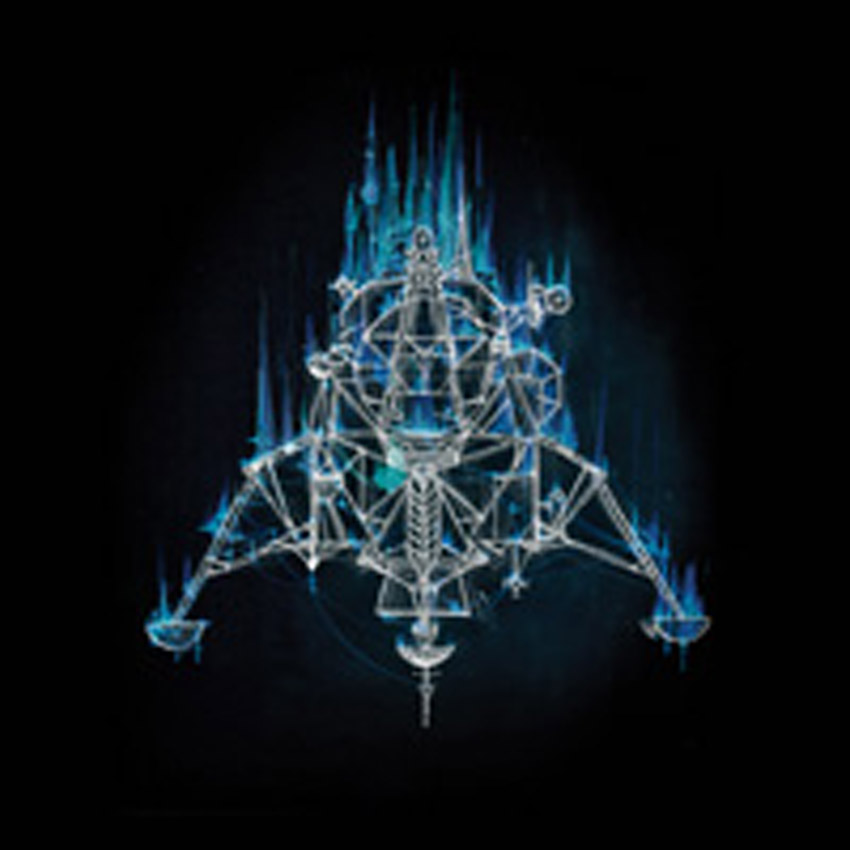
It has taken me entirely too long to get around to covering a Petrels album, but London composer/multimedia artist Oliver Barrett's third opus turned out to be an ideal place to start.  Due to the complex and heavily processed nature of these pieces, the closest reference point is probably someone like Tim Hecker, yet Barrett's epic scope; talent for texture, dynamics, and melody; and passion for deep and unusual concepts place both Petrels and Mima in a category all their own.
With both Talvihorros and Petrels on board, Denovali seems quite intent on becoming the go-to label for records with crazily ambitious concepts.  Case in point: Mima is partially based upon an epic and obscure (in the US, anyway) science fiction poem by Swedish Nobel Laureate Harry Martinson.  The poem in question, "Aniara," chronicles the existential struggles of colonists stranded on a spaceship that has been ejected from the solar system and has been described as "inexpressible, immeasurable sadness" that "transcends panic and terror and even despair [and] leaves you in the quiet immensities, with the feeling that you have spent time, and have been permanently tinted, by and with an impersonal larger-than-God force."  Woah.  Consequently, Mima is the sort of album that I expected to describe with phrases like "unintentionally hilarious" and "egregiously misjudged" and–in lesser hands–I am sure it would have been all that and more.  Or at least it would have just been oppressively bleak dark ambient.  In Barrett's hands, however, Mima is beautiful, sublime, and kind of staggering.
The album begins in deceptively simple and minimal fashion though, as the 15-minute "The 40 Year Mission to Titan is Overtaken by the 40 Minute Mission to Titan" opens with field recordings of crickets and a hollow metal clunk that calls to mind some hanging pots and pans in an abandoned shack being blown by a lonely wind.  The insectoid chatter gradually escalates in volume and is eventually joined by a warmly droning synth and some cymbal flourishes, but just keeps simmering until it finally gives way to a brief and somewhat unpromising interlude of stuttering, burbling synth.  And then...Mima just ERUPTS.  The last third of "The 40 Year Mission" is a densely majestic, well-earned crescendo of layers and layers of vibrantly alive synthesizer catharsis.  From that point onward, Mima is a lush, gently hallucinatory tour de force of warm chords and raw power mingled with quieter, more fragile passages fraught with mystery and accumulating tension.
Remarkably, every single one of the remaining pieces offers up at least one passage that I absolutely love.  "Katharine-22B," for example, masterfully transitions from a rapturous roar to a beautifully melancholy arpeggio melody, while the closing "Treetiger" brings the album to a roiling conclusion with a melodic wall of swirling, gnarled, and howling synthesizers or guitars that would make Kevin Shields proud (and probably little bit jealous).  Mima's pièce de résistance, however, is its third piece: "A Carapace for Carter's Snout."
Much like "The 40 Year Mission," it begins in very understated fashion, opening with some dueling feedback whines that uncomfortably wobble and oscillate together.  Gradually, Barrett allows a characteristically warm and sumptuous chord progression to fade in and gradually eclipse the initial motif.  More importantly, he also introduces a dense layer of skittering, squiggling electronics that stays for the entire song, resulting in one of my favorite musical moments of 2014 to date: the moment when all the music abruptly disappears to leave something that sounds like the ocean just spewed a squirming, chittering, slithering, and squelching mountain of deep sea life onto a beach.
The sole critique that I can muster is that Oliver's occasional drums prevent Mima from fully attaining an illusion of timelessness, as they ensure that it sounds like it came from this decade.  That "rock element" may also prevent some from seeing Barrett as a serious composer, as "Treetiger" certainly has more in common with shoegaze/post-rock than with more elitist/cerebral fare.  That is certainly not Barrett's problem though and this album certainly sounds amazing NOW.  At worst, Mima is a brilliant and ambitious album with one stone-cold masterpiece in "Carapace," but I am choosing to err on the side of calling the whole thing an unqualified triumph of both vision and execution.  Mark my words: within six months, everybody is going to be basing their albums on 60-year-old Swedish science fiction poems.
- The 40 Year Mission to Titan is Overtaken by the 40 Minute Mission to Titan
- Katharina-22B
- A Carapace for Carter's Snort
 
Read More
- Administrator
- Albums and Singles
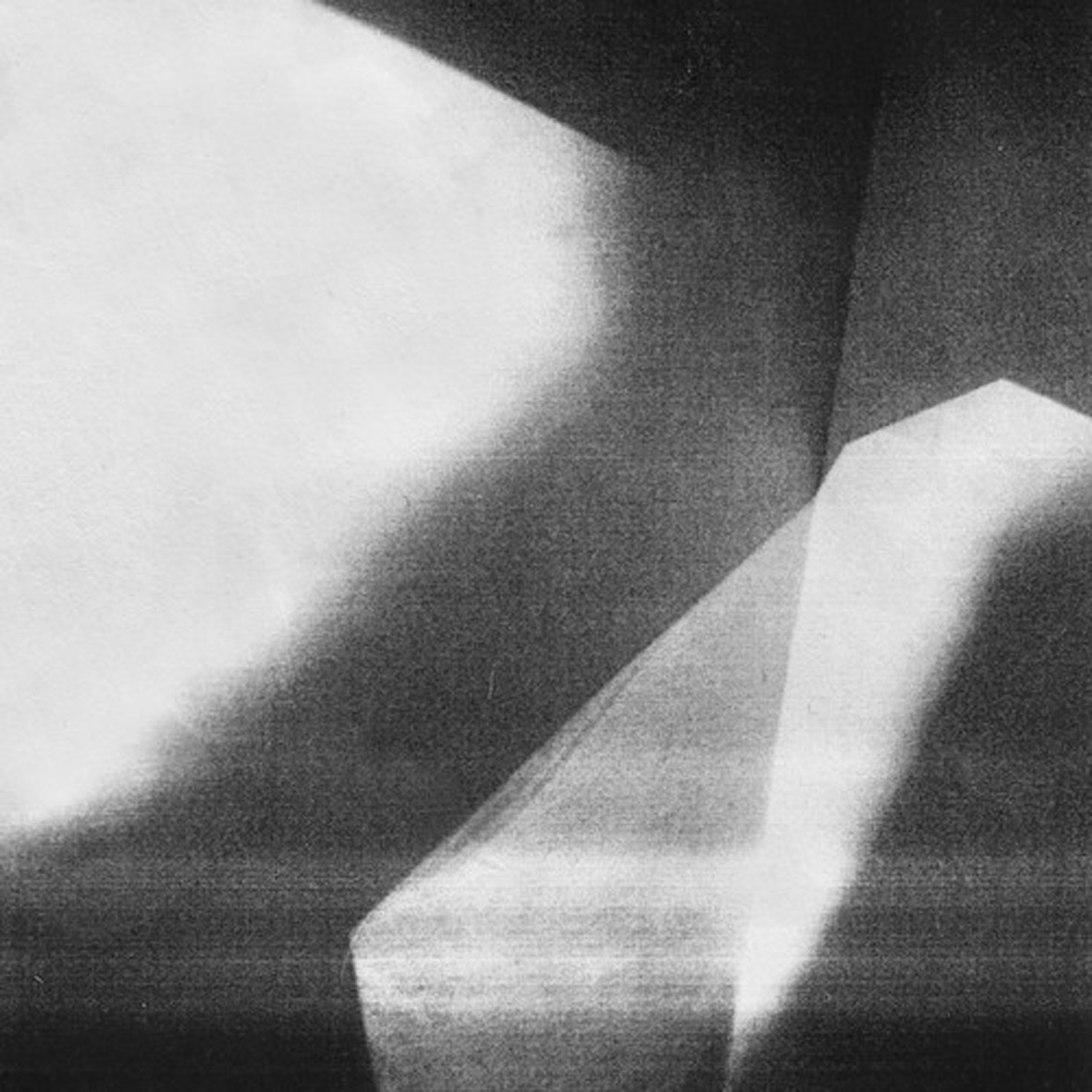
As much as it pains me deeply to use this adjective, this Manchester duo seem to specialize in something resembling hypnagogic techno. At the very least, they attempt to refract more conventional techno sounds through a drugged/half-asleep/eyes closed/out-of-body sensibility that is seemingly all their own.  That is a tricky feat to pull off though, as the line separating "ghostly and diffuse" from "boring, forgettable, and easy to ignore" is quite a narrow one.  Fortunately, both of these EPs are likable (if flawed) in their own right and admirably a bit beyond the pale, but the newer New Brutalism is significantly more sharply realized than its predecessor.
Struck certainly starts off strongly enough though, as the title track's combination of a lurching bass drum thump with a slow-motion machine gun snare roll is quite infectious.  The song's other elements are what make Rainer Veil something out of the ordinary though, as Liam Morley and Dan Valentine spend the rest of the piece trying to artfully undercut that great beat.  Rather than intensifying or building up a groove, "Struck" instead augments that wonderfully clattering beat with lush synth swells that feel like slow, deep exhalations.  Also, the beat itself starts to subtly come apart, occasionally derailing into descending unfunky clunks rather than the expected snare roll.  Fortunately, the beat is still ultimately propulsive enough to hold the song together and even serves as a strong hook of sorts.
Most of the other songs fare a bit less well, however, though they are almost all built upon at least one inspired motif.  "Slow Beaming," for example, has a pleasingly sultry, understated groove, while "Bala" boasts a nice "skipping CD" loop and a spectral, drifting vocal hook (of sorts).  Unfortunately, "Beaming" ends after little more than two minutes with no real development, while "Bala" stretches out for seven minutes, but gradually dissolves into hazy ambient drone.  "Wade In" returns with a similar disembodied, artificial-sounding vocal hook, but takes things in the opposite direction and (unsuccessfully) attempts a conventional song structure with an almost-chorus that feels very awkward, forced, and stylistically divergent from the rest of the release.
Struck closes with "Yield," which initially seems like a hissing, warm ambient piece, but is quickly enlivened somewhat by a deep, buried beat and more whispy, barely-there vocals swoons and moans before gradually drifting to a conclusion.  More importantly, "Yield" is inadvertent microcosm of why Struck is such an exasperating release: I genuinely appreciate Morley and Valentine are trying to do, but so much of this EP occupies the no-man's land between techno and ambient that is too dull to remember, but too carved-up into song-like pieces to get fully absorbed in.  Consequently, Struck is best appreciated as a cool single with great intentions and a bunch of weaker bonus tracks tacked on.

New Brutalism wises reprises the elements of Struck's strong opening with "UK Will Not Survive," offering up a hobbling, clattering beat of its own amidst a thrum of droning, hazy synths.  Dan and Liam also make some subtle (but welcome) tweaks to their formula, adding some alternately snarling and grinding layers of textures and sending their groove through a number of satisfyingly dynamic crests and valleys.  The energy level plunges a bit for "Negative Space," but that it does not entirely kill the momentum–it just drags things deeper into Rainer Veil's bleary, nocturnal wheelhouse, as the duo's increased imagination and variety with their beats happily follows with them to enliven their de rigueur warmly hissing synth drones.
The EP's longest piece ("Three Day Jag") follows, taking the warped vocal hooks of Struck into even stranger, more distant, and more inhuman territory.  Again, the "music" is more of a swirling, drifting blur of synths and ruined samples set to a groove than anything resembling modern techno.  In fact, The Caretaker might actually be the closest reference point, as "Jag" basically feels like a dance remix of a haunting, as its increasingly propulsive beat is essentially propping up little more than an ominous hum, distant gnarled voices, and creepily echoing clattering.  I especially enjoyed how the echoes created a lingering after-image of the stuttering stop-start pattern of the drums.
"Strangers," on the other hand, is a less adventurous return to the "vocal hook" side of Struck, though it still displays a nice evolution: Valentine and Morley definitely have a lighter touch this time around and they also seem to have developed a better intuition about when an idea begins to wear out its welcome.  Consequently, "Strangers" inadvertently renders most of Struck's second half obsolete, as it is simultaneously more propulsive and vibrant, yet less overtly heavy-handed.  It gets particularly good around the halfway point when the beat kicks in, as the duo allow it plenty of space to make its thudding impact and their synth motif has just enough melodic movement to suggest the hint of a song without quite breaking the sleepily hallucinogenic spell of the earlier pieces.
The closing "Run Out" is a nicely dystopian aberration, as it initially approximates a field recording of the distant clangs and rumbles of a factory in an otherwise deserted town before some murky synth swells darken the mood further.  In fact, I enjoyed the illusion so much that I was actually disappointed a little when the beat kicked in and dragged me back to reality.  I understand that this is ostensibly a "dance" release, but ending the EP with that last two-minute flourish of "groove" was a puzzling move, as it does not actually take the song anywhere interesting and ruined what would have been an effectively striking and desolate ending.  Oh well.  Although New Brutalism is still not entirely great, it certainly marks a significant compositional and dynamic improvement over its predecessor and boasts some promising flashes of real inspiration.  Even making a merely good EP in this vein is a remarkable achievement though, as weaving drifting, drowsy emptiness into gold is a feat of alchemy that few would dare to even attempt.
Samples:
 
 
Read More
 aborted
aborted